
Jacobitism was a political movement that supported the restoration of the senior line of the House of Stuart to the British throne. The name derives from the first name of James II and VII, which in Latin translates as Jacobus. When James went into exile after the November 1688 Glorious Revolution, the Parliament of England argued that he had abandoned the English throne, which they offered to his Protestant daughter Mary II, and her husband William III. In April, the Scottish Convention held that he "forfeited" the throne of Scotland by his actions, listed in the Articles of Grievances.

The Battle of Killiecrankie, also referred to as the Battle of Rinrory, took place on 27 July 1689 during the 1689 Scottish Jacobite rising. An outnumbered Jacobite force under John Graham, Viscount Dundee and Sir Ewen Cameron of Lochiel defeated a government army commanded by General Hugh Mackay.
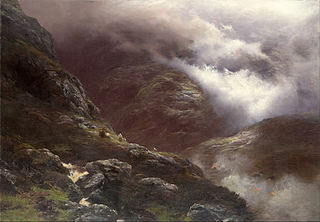
The Massacre of Glencoe took place in Glen Coe in the Highlands of Scotland on 13 February 1692. An estimated 30 members and associates of Clan MacDonald of Glencoe were killed by Scottish government forces, allegedly for failing to pledge allegiance to the new monarchs, William III and Mary II.

John Graham, 7th of Claverhouse, 1st Viscount Dundee was a Scottish soldier and nobleman, a Tory and an Episcopalian. He was responsible for policing southwest Scotland during and after the religious unrest and rebellion of the late 17th century, and went on to lead the Jacobite rising of 1689.

The Williamite War in Ireland, March 1689 to October 1691, also known as Irish: Cogadh an Dá Rí or "War of the two kings", took place from March 1689 to October 1691. Fought between supporters of James II and his successor, William III, it resulted in a Williamite victory. It is generally viewed as a related conflict of the 1688 to 1697 Nine Years' War.

Hugh Mackay was a Scottish military officer who settled in the Netherlands, and spent most of his career in the service of William of Orange.
The Nonjuring schism refers to a split in the established churches of England, Scotland and Ireland, following the deposition and exile of James II and VII in the 1688 Glorious Revolution. As a condition of office, clergy were required to swear allegiance to the ruling monarch; for various reasons, some refused to take the oath to his successors William III and II and Mary II. These individuals were referred to as Non-juring, from the Latin verb iūrō, or jūrō, meaning "to swear an oath".
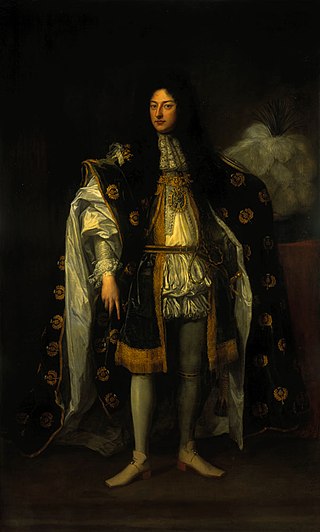
John Drummond, 1st Earl of Melfort, styled Duke of Melfort in the Jacobite peerage, was a Scottish politician and close advisor to James II. A Catholic convert, Melfort and his brother the Earl of Perth consistently urged James not to compromise with his opponents, contributing to his increasing isolation and ultimate deposition in the 1688 Glorious Revolution.
Patriot Parliament is the name commonly used for the Irish Parliament session called by King James II during the Williamite War in Ireland which lasted from 1688 to 1691. The first since 1666, it held only one session, which lasted from 7 May 1689 to 20 July 1689.

Tayinloan is a village situated on the west coast of the Kintyre peninsula in Argyll and Bute, Scotland. The village has a sub post office, general store and a small hotel, a village hall and a play park. There is a cafe bar situated beside the ferry car park which also offers self-catering or bed and breakfast accommodation. The nearest towns are Campbeltown and Tarbert.

Clan MacAlister is a Scottish Clan. The clan is the earliest branch to have split off from Clan Donald, claiming descent from Alasdair Mòr, son of Domhnall founder of Clan Donald. From Alasdair Mòr the clans takes its surname MacAlister; this surname is an Anglicisation of the Gaelic MacAlasdair meaning "son of Alasdair". In the 15th century the chief of the clan was seated in Kintyre, and the clan was centred there until the 18th century, when a chief sold the family estate in preference to an estate in the Scottish Lowlands.
Alexander Cannon was a Scottish professional soldier in the second half of the 17th century, who served in the armies of William of Orange and James VII and II.

The 1689 Convention of Estates sat between 16 March 1689 and 5 June 1689 to determine the settlement of the Scottish throne, following the deposition of James VII in the 1688 Glorious Revolution. The Convention of the Estates of Scotland was a sister-institution to Parliament, comprising the three estates of bishops, barons and representatives of the Burghs. Historically, it had been summoned by the king of Scots for the limited purpose of raising taxes, and could not pass other legislation. Unlike the English Convention Parliament of 1689, the 1689 Scottish Convention was also a contest for control of the Church of Scotland or Kirk.

The Restoration was the return of the monarchy to Scotland in 1660 after the period of the Commonwealth, and the subsequent three decades of Scottish history until the Revolution and Convention of Estates of 1689. It was part of a wider Restoration in the British Isles that included the return of the Stuart dynasty to the thrones of England and Ireland in the person of Charles II.
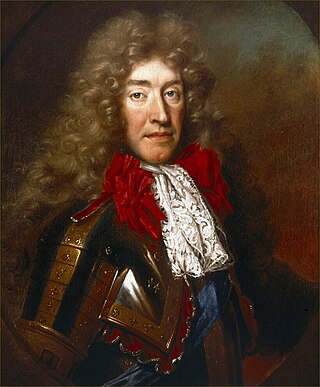
The Glorious Revolution in Scotland refers to the Scottish element of the 1688 Glorious Revolution, in which James VII was replaced by his daughter Mary II and her husband William II as joint monarchs of Scotland and England. Prior to 1707, the two kingdoms shared a common monarch but were separate legal entities, so decisions in one did not bind the other. In both countries, the Revolution confirmed the primacy of Parliament over the Crown, while the Church of Scotland was re-established as a Presbyterian rather than Episcopalian polity.
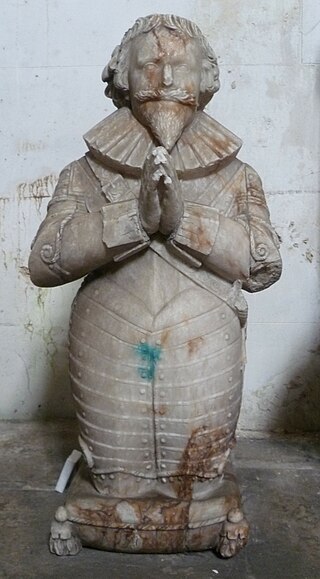
Scottish religion in the seventeenth century includes all forms of religious organisation and belief in the Kingdom of Scotland in the seventeenth century. The 16th century Reformation created a Church of Scotland, popularly known as the kirk, predominantly Calvinist in doctrine and Presbyterian in structure, to which James VI added a layer of bishops in 1584.
Thomas Buchan (c.1641–1724) was a Scottish professional soldier from a Catholic family in Aberdeenshire who served in the armies of France, the Netherlands and Scotland. He remained loyal to James II after the 1688 Glorious Revolution and participated in the War in Ireland before taking command of Jacobite forces in Scotland in February 1690. After the Highland chiefs submitted to William III in early 1692, he was given safe passage to France and later allowed to return home in 1703. He maintained links with the Stuart exiles and played a small role in the 1715 Rising but escaped punishment and died at Fyvie in 1724.
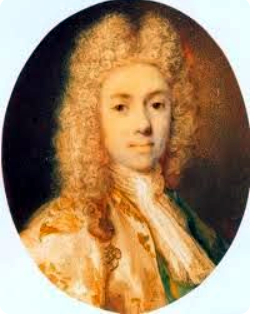
William Murray, Marquess of Tullibardine was a Scottish nobleman and Jacobite who took part in the rebellions of 1715, 1719, and 1745.

Argyll's Rising, also known as Argyll's Rebellion, was an attempt in June 1685 to overthrow James II and VII. Led by Archibald Campbell, 9th Earl of Argyll, the rising was intended to tie down Royal forces in Scotland while a simultaneous rebellion under James Scott, 1st Duke of Monmouth began in England. Both rebellions were backed by dissident Protestants opposed to the accession of the Roman Catholic James to the throne.
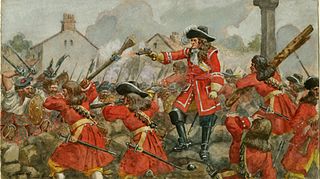
The Jacobite rising of 1689 was a conflict fought primarily in the Scottish Highlands, whose objective was to put James II & VII back on the throne, following his deposition by the November 1688 Glorious Revolution. Named after "Jacobus", the Latin for James, his supporters were known as 'Jacobites' and the associated political movement as Jacobitism. The 1689 rising was the first of a series of rebellions and plots seeking to restore the House of Stuart that continued into the late 18th century.

















